EV news
Mitsubishi Chemical Eyes Role in India’s Semiconductor & EV Market
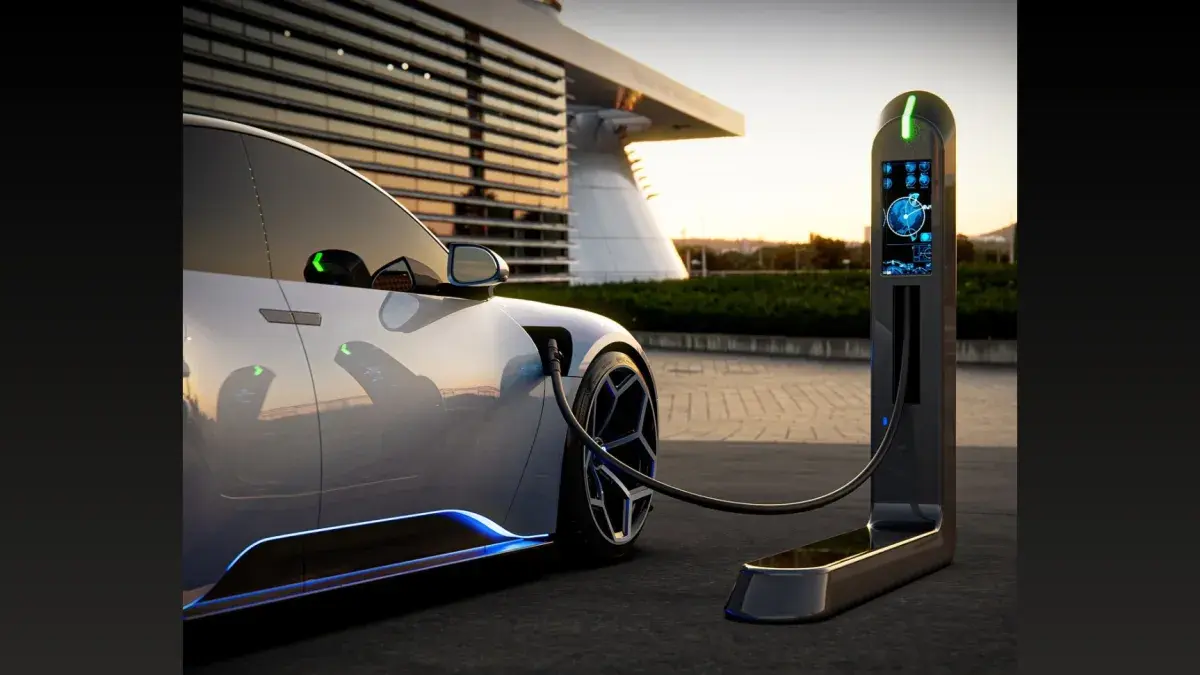
Mitsubishi Chemical Group has expressed interest in becoming a key player in India’s semiconductor and electric vehicle supply chain. The Japanese company is looking for opportunities to expand its presence in the Indian market by setting up a new project in these sectors. Manabu Chikumoto, president and CEO of the company, spoke during an interactive session at the Bengal Chamber of Commerce and Industry in Kolkata about the potential of India’s expanding semiconductor and electric vehicle industries and the significance of working with partners in the area.
While the company has yet to finalize a location for its proposed project, Chikumoto acknowledged the crucial role that government support will play in making this venture a success. He mentioned that the Indian government has been working hard to grow the semiconductor industry, and that Mitsubishi Chemical Group would need help from both the central and local governments to start up in India. In West Bengal, where it previously ran a purified terephthalic acid (PTA) plant under the MCC PTA India brand, Mitsubishi Chemical has a long history of operations in India.
Until industrialist Purnendu Chatterjee’s TCG purchased the facility, the company managed it. The Haldia-based plant, which is now known as MCPI, continues to play a significant role in the production of PTA, a crucial raw material for the production of PET resins for the bottle industry. Chikumoto recalled the difficulties Mitsubishi Chemical had to overcome in India during the company’s previous operations there. He acknowledged that support from the state and central governments, along with assistance from financial institutions and other stakeholders, played a crucial role in helping the company navigate those difficulties.
Following the transition to TCG’s ownership, MCPI was able to expand its business, further strengthening its presence in the chemical industry.As part of its long-term strategy, Mitsubishi Chemical Group is focusing on carbon-neutral and environmentally friendly technologies as it looks to the future. This is in line with global efforts to cut carbon emissions and encourage industry-wide sustainability.
While maintaining its commitment to environmentally responsible practices, the company is looking into ways to contribute to the developing semiconductor and electric vehicle markets. Chatterjee also emphasized the significance of locating environmentally friendly plastics solutions during the discussion. He said that plastics are still a good value and long-lasting material. He also said that recycling is important, but polymers can’t be completely replaced by anything else right now in many industries.
His remarks bring to light the ongoing debate regarding the use of plastic and the need for novel strategies to strike a balance between the demands of industry and the economy and environmental concerns. Haldia Petrochemicals Limited, another significant Haldia industrial facility, is run by TCG, the company that owns MCPI. The company continues to play a significant role in the region’s industrial landscape, contributing to the petrochemical sector and exploring new opportunities for growth.
The Indian government is making significant investments in the semiconductor and electric vehicle supply chains, which coincides with Mitsubishi Chemical’s renewed interest in these sectors. India actively encourages global corporations to establish operations in the country by placing a growing emphasis on self-reliance and domestic manufacturing. Particularly the semiconductor industry has been a major focus, and numerous incentives have been provided to encourage investment and enhance local production capabilities.
The rapid expansion of the market for electric vehicles is also being fueled by government policies that encourage clean energy and long-term transportation options. As consumer demand for EVs rises, companies involved in battery production, raw material supply, and semiconductor manufacturing are finding new opportunities in the Indian market. The potential for Mitsubishi Chemical to enter this market is in line with these broader trends in the industry and has the potential to establish the company as a major player in the developing technological landscape of India.
Although specific details of the proposed project by Mitsubishi Chemical have not yet been finalized, the company’s interest demonstrates a strong commitment to expanding its presence in India. By leveraging its expertise and forming strategic partnerships, Mitsubishi Chemical aims to contribute to the country’s growing semiconductor and EV ecosystem. As discussions with government authorities and potential collaborators progress, further details about the company’s plans are expected to emerge in the coming months.
The prospect of Mitsubishi Chemical entering the Indian market for semiconductors and EV supply chains underscores the country’s increasing importance as a hub for technological innovation and industrial development. India presents a compelling opportunity for global corporations looking to invest in the future of advanced manufacturing and clean energy due to supportive government policies, a rapidly expanding market, and a focus on sustainability.
Article By
Sourabh Gupta
Blog
MG’s Cyberster: India’s Upcoming Premium Electric SUV Set to Launch in July 2025
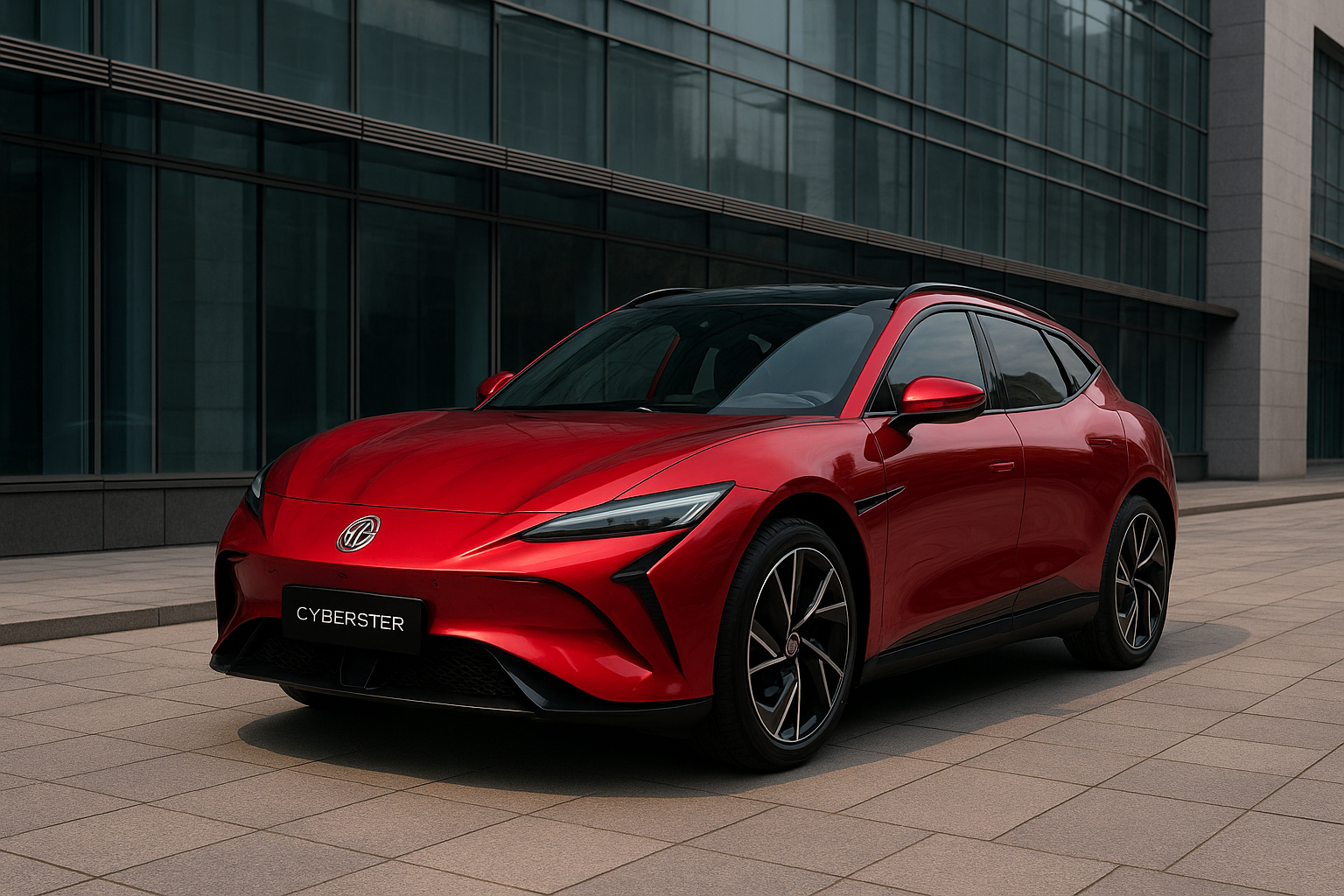
A Bold Step Into India’s Luxury EV Market
So, MG is about to bring out something pretty cool — the Cyberster, a premium electric SUV, expected to launch around July 2025. It’s their way of stepping up in India’s electric vehicle game and offering something that’s not just green, but also stylish and packed with tech.
EVs are getting popular here, and MG wants to be part of that wave, especially for folks who want a good-looking, comfy ride that’s loaded with modern features.
Striking Design Meets Cutting-Edge Technology
We don’t have all the info yet, but the Cyberster looks sharp. Think sleek and sporty, something that’ll catch eyes on the road.
Inside, expect lots of screens, smart features, and safety tech — basically, everything you’d want to make your drive smooth and fun. Whether it’s a quick city run or a weekend escape, this car’s aiming to make every trip enjoyable.
Performance That Packs a Punch
If you’re paying for a premium electric SUV, you want it to perform, right? While details are still under wraps, MG usually doesn’t disappoint. Expect a good driving range and enough power to make driving fun.
And with fast charging, you won’t be stuck waiting around forever — a big plus for busy folks.
What the Cyberster Means for Indian Consumers
This car means more choice for buyers who want a premium EV. The market is heating up, and it’s great because it gives you options that fit your style and budget.
MG is known for giving good value, so this might be a premium ride without the crazy premium price tag.
Growing Competition: A Win for Buyers
More companies entering the EV space means the competition’s getting fierce — Tata, Mahindra, Hyundai, and now MG all want your attention.
That means better cars, better prices, and more charging stations popping up, making EVs easier to own.
MG’s Vision for India’s EV Future
The Cyberster is just the start for MG. They’re clearly aiming to be a big player in India’s EV scene by giving buyers stylish, tech-packed cars.
As India moves toward greener transport, cars like this will help make electric vehicles the new normal.
Article By
Sourabh Gupta
Blog
India’s EV Market Heats: More Players, More Competition
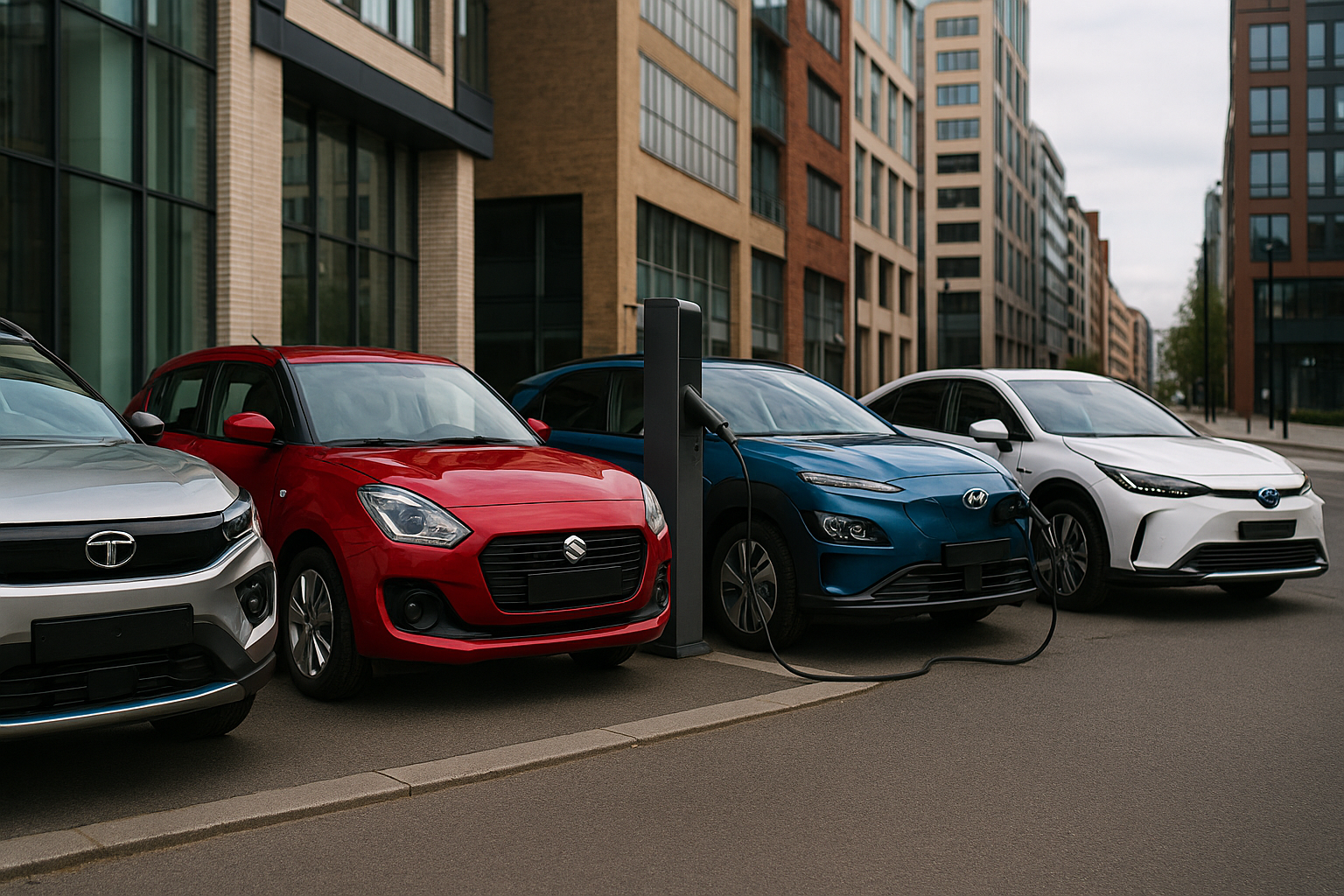
The Electric Vehicle Battle Is Just Getting Started
You know how things are changing fast with electric vehicles here in India? Well, it’s no longer just a couple of companies in the game. Tata and Mahindra have been leading for a while, but now Maruti, Toyota, and Hyundai are jumping in too. It’s turning into a proper race, and that’s great news for anyone thinking about buying an EV.
More players mean more choices, and when companies compete, it usually means better deals and cooler cars for us.
New Entrants Bring Fresh Energy
Maruti Suzuki is like the go-to brand for most Indian families because their cars are affordable and reliable. Now, if they start selling EVs, it’s going to make electric vehicles a lot more reachable for everyday folks.
Then you have Toyota and Hyundai, which have been working on electric cars globally for years. They’re bringing that know-how to India, which means better technology and cars designed to handle our roads and conditions.
This fresh blood is going to push everyone to do better, which is a win for all of us.
What This Means for Consumers
For buyers, this is the best time to consider an EV. You’ll get a wider choice of vehicles — from simple and affordable models to fancy ones packed with features.
Also, with so many companies competing, expect better batteries that last longer, faster charging times, and prices that won’t scare you away.
Charging stations will become more common, making it easier to own and use an EV without stress.
Challenges for Established Players
Tata and Mahindra have done well so far, but now the heat’s on. They’ll need to keep improving their cars and customer service to stay ahead.
More competition means prices might get friendlier, and cars will keep getting better, which is good news for everyone.
The Road Ahead: A Win for India’s Green Future
All this competition will speed up EV adoption, which means cleaner air and less pollution.
With more companies investing in EVs, we’ll see more charging points, better batteries, and more jobs related to green technology.
The future looks electric, and it’s shaping up to be an exciting ride.
Article By
Sourabh Gupta
Blog
Tata Motors Sets Sights on Dominating 50% of India’s EV Market
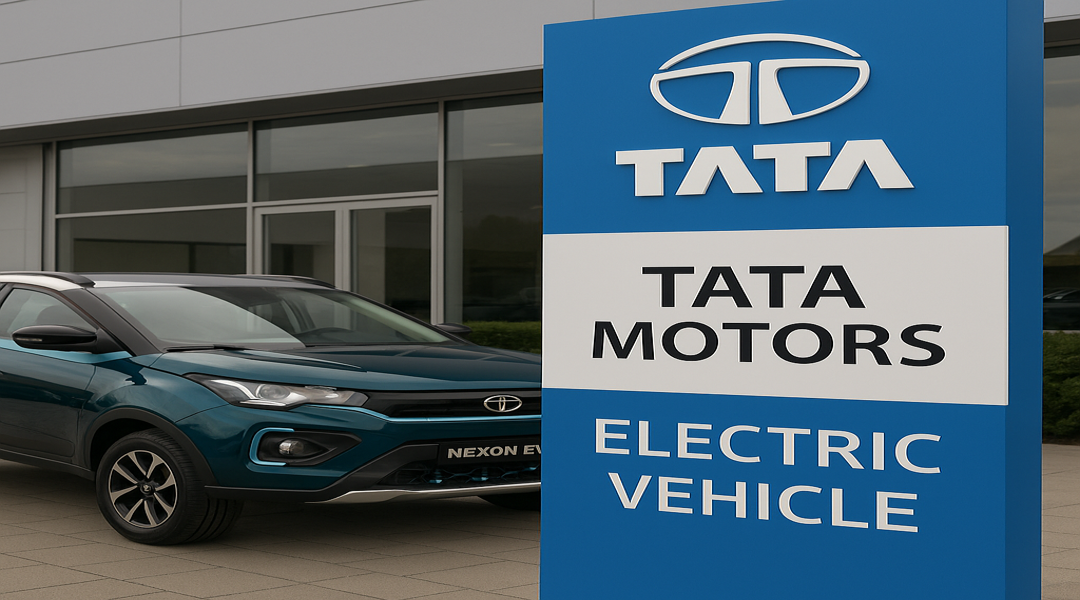
A Bold Ambition in a Growing Industry
Tata Motors isn’t just aiming to be in the EV race — they want to lead it. A recent ET Auto report says Tata wants to grab half of India’s electric vehicle market, which is a pretty big deal.
India’s EV scene is growing fast. More people are thinking about electric cars because petrol prices keep climbing, and folks want cleaner air. With all this happening, Tata’s shooting for the top spot, wanting to hold a massive share of the market.
Where Tata Motors Stands Today
Right now, Tata is the go-to name when it comes to EVs in India. The Nexon EV is one of the best-selling electric SUVs in the country. They’ve also got other models like the Tiago EV and Tigor EV that cover different budgets and needs.
But Tata knows it can’t just sit back and relax. Other brands like Mahindra, MG, and Hyundai are also pushing hard. Tata’s got to keep coming up with new stuff and get better if they want to stay ahead.
How Tata Plans to Achieve Its 50% Goal
So, how do they plan to take over half the market? They’ve got a few things lined up:
Expanding Its EV Lineup
Tata’s working on some cool new electric cars like the Harrier EV, Curvv EV, and the fancy Avinya. These options will give customers more choices, whether they prefer something small and practical or large and luxurious.
Building More Charging Stations
One of the biggest worries about EVs is charging. Tata’s working with Tata Power to set up more chargers across cities and towns. The easier it is to charge, the more people will want to buy EVs.
Making Batteries in India
Batteries are the priciest part of EVs, and importing them adds to the cost. Tata wants to make batteries right here in India, which should help bring prices down.
Going After Fleets and Government Buyers
Tata’s not just focusing on people buying cars for themselves. They’re also selling EVs to taxis, delivery companies, and government fleets. That’s a smart move because these buyers buy in bulk.
Challenges Ahead
It won’t be a smooth ride, though. Tata still has some bumps to cross:
- Battery supply might not always keep up with demand.
- Other companies are catching up fast.
- Not all towns have enough charging points yet.
- Convincing people outside cities to switch to EVs takes time.
The Road Ahead
Tata wants to own half of India’s EV market, and while that’s a huge goal, they have the right plan and the brand to pull it off. For buyers, this means better cars and more choices soon. For India, it’s a cleaner, greener future.
Article By
Sourabh Gupta
-

 Blog6 months ago
Blog6 months agoIndia’s Electric Vehicle Market Forecast to 2028 A Rapidly Growing Industry
-

 Blog12 months ago
Blog12 months agoTop 10 Electric Vehicles of 2024: A Comprehensive Guide
-

 Blog1 year ago
Blog1 year agoImpact of Electric Vehicles on the Environment and Pollution
-

 Blog12 months ago
Blog12 months agoTop 5 best electric vehicles Under $30,000: Affordable Choices for 2024
-

 EV news6 months ago
EV news6 months ago2025 Might Be the Time of EVs in India, Drove by SUV Dispatches
-
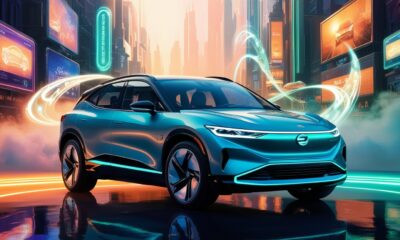
 Blog1 year ago
Blog1 year agoEV Charging Technology: Leading the Electric Vehicle Innovations in 2024
-

 EV news9 months ago
EV news9 months agoOla Electric Offers Massive Festive Discounts on Scooters Starting at ₹50,000
-

 Blog6 months ago
Blog6 months agoMahindra BE 6 An Intense Move toward the Fate of Electric Versatility




